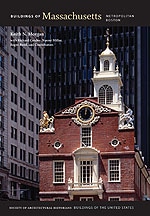
The first houses erected on Arlington Street, in 1860, provide the clearest example of Arthur Gilman's Parisian inspiration for the new houses of the Back Bay. The influence is most evident in the use of monochromatic stone (in this case sandstone from New Brunswick) with a rusticated first floor, mansard roofs, and classical detailing. These houses are modestly ornamented with the principal (second) floor having windows that are the most richly embellished. The houses that were built on Arlington Street in the first years of the development of the Back Bay, which included a group of three designed by New York architect Richard Morris Hunt that no longer stand, gave this street an appearance of uniformity that was typical of Parisian boulevards. A later example is the house at 8 Arlington Street for Barney Cary, designed in 1869 by Bryant and Rogers.














